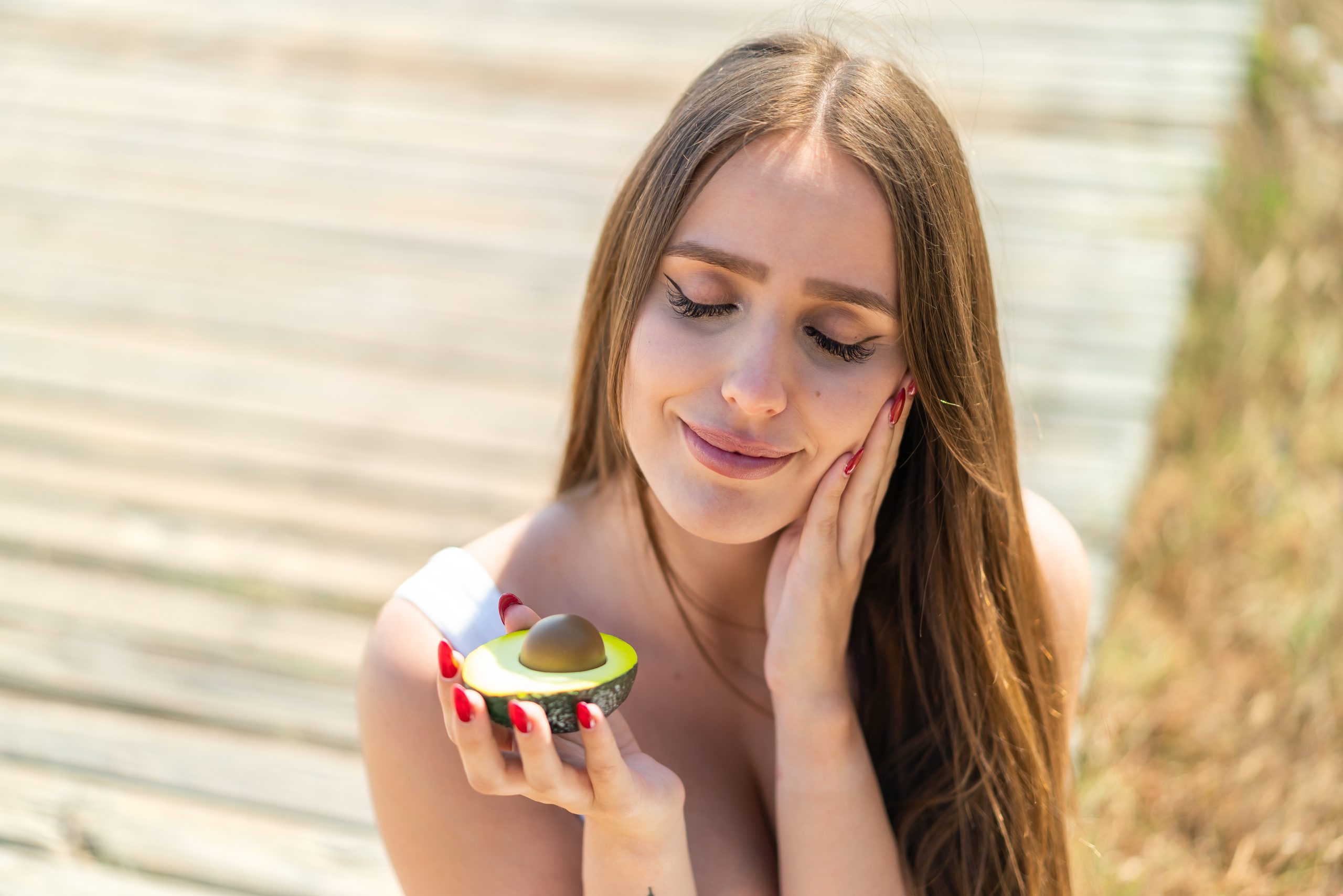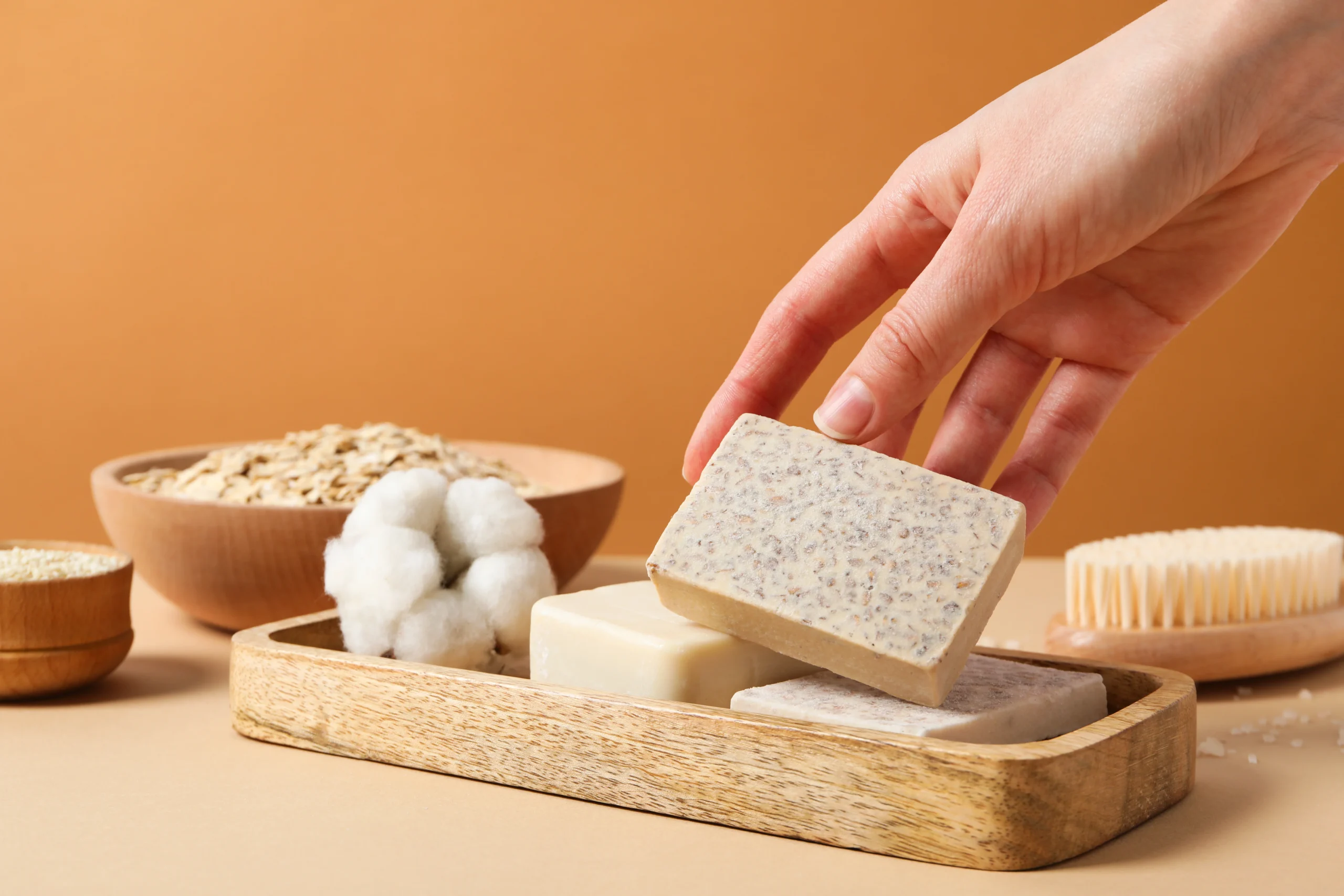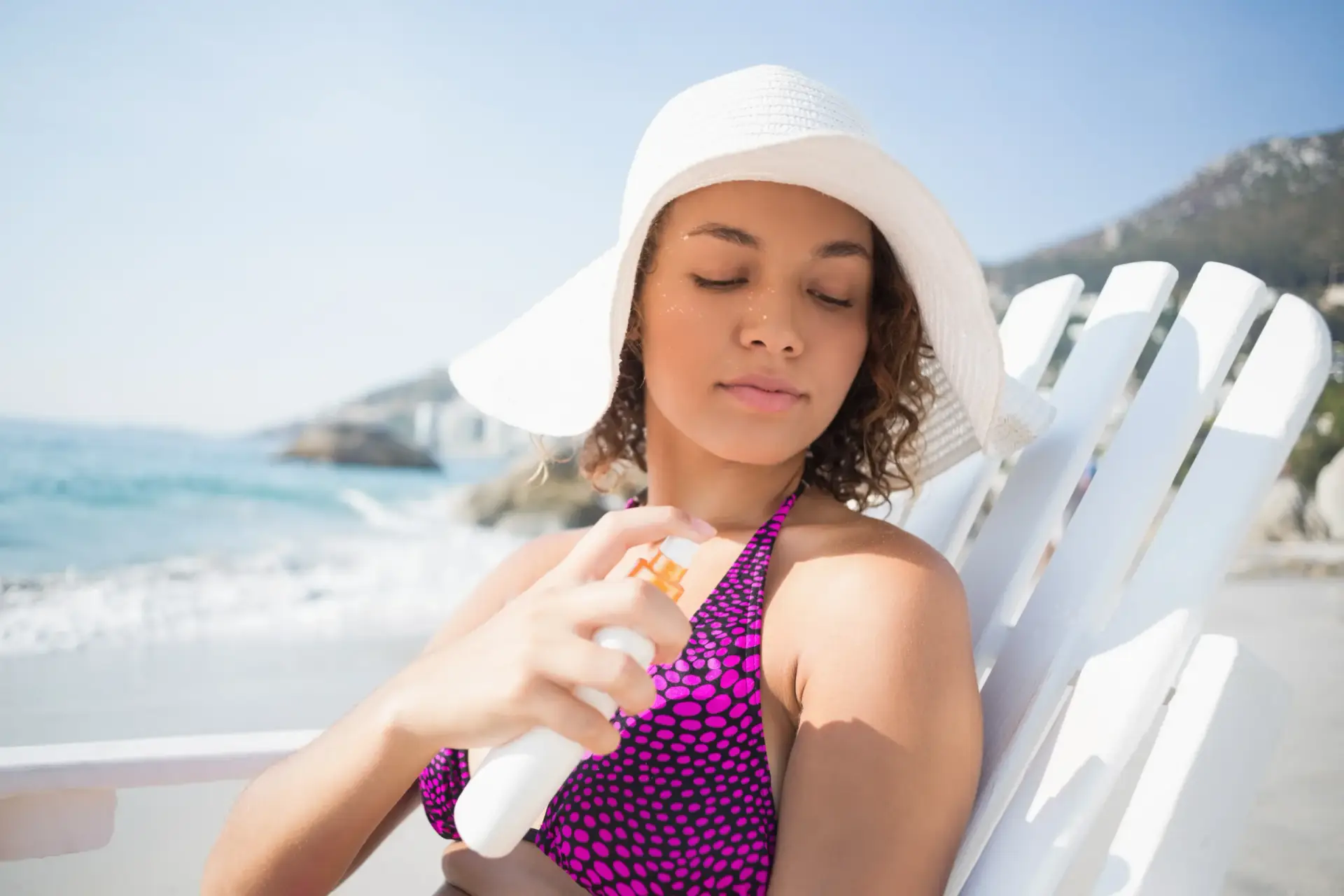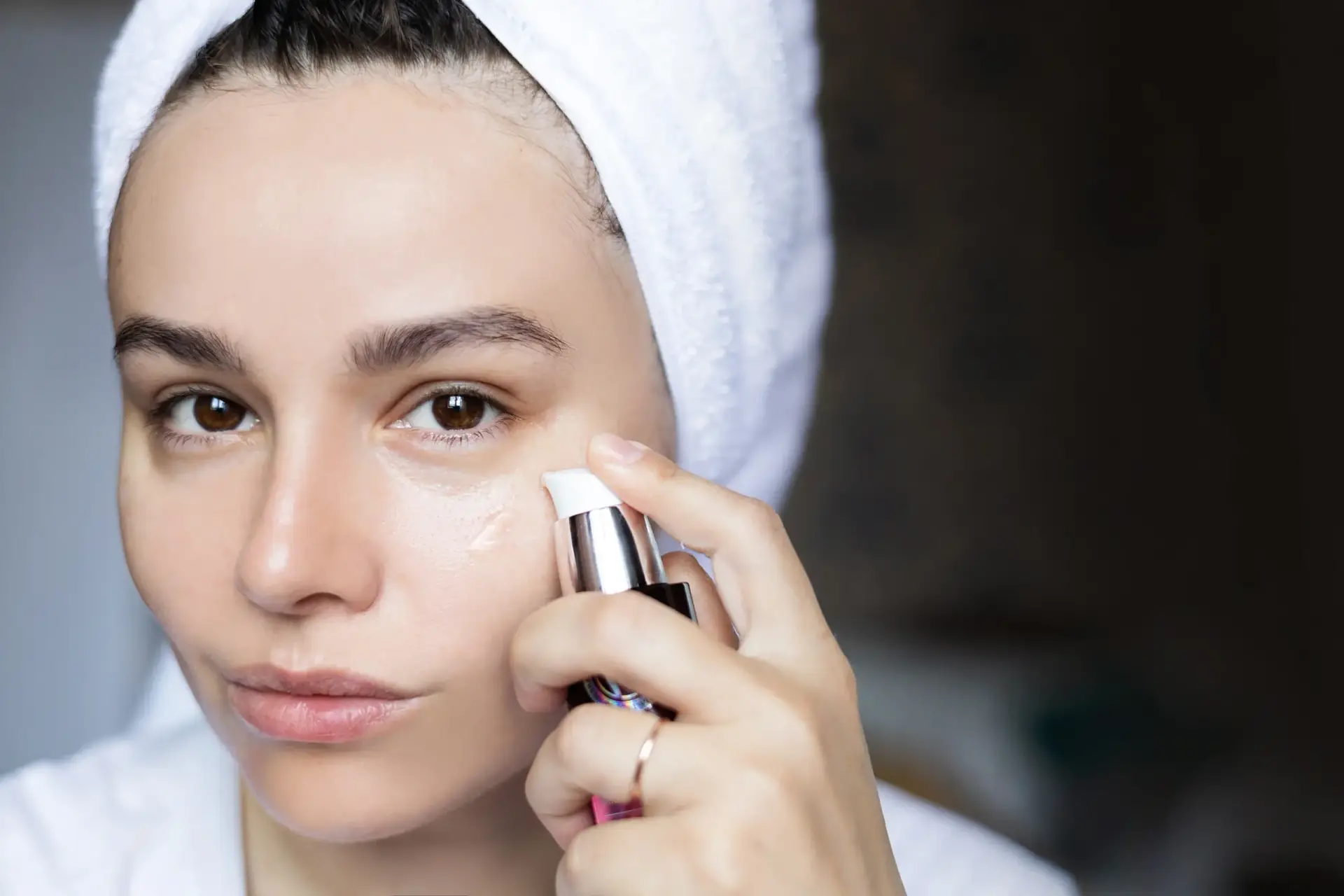Understanding The Best Skin Care for Sun Damage
The best skin care for sun damage starts with understanding how ultraviolet (UV) rays damage your skin and how to prevent and mitigate that damage. Sun damage is not just temporary sunburn; it’s a deeper, often irreversible process that accelerates aging changes, causes uneven skin tone, and increases the risk of skin cancer. Prolonged exposure to UVA and UVB rays weakens skin cells, leading to signs of aging, uneven skin tone, dullness, and even serious complications like actinic keratosis.
In this powerful guide, we’ll learn how to restore skin from sun damage and share seven effective ways that work. Whether you notice early signs like hyperpigmentation or advanced signs like deep wrinkles and sagging skin, adopting the best skin care for sun damage can change the appearance of your skin. Following dermatologist-recommended treatments, antioxidant-rich serums, and the proper routine will improve damaged skin and protect it from future damage.
This guide will provide detailed information about ingredients, daily routines, clinical options, natural methods, and protective habits that effectively restore and protect the skin. Adopting a proper skin care routine will make your skin more supple, smooth, and radiant. Suppose you ever feel like your current routine is not enough. In that case, this article will help you with practical solutions and effective ways.
So, let’s first try to understand sun damage, how it manifests, and why proper treatment is essential for the skin’s long-term health.
What Is Sun Damage and How Does It Affect The Skin?
Sun damage, known medically as photoaging, is caused by prolonged exposure to the sun’s ultraviolet rays (UVA and UVB). These rays penetrate the skin and alter DNA, break down collagen, thin the top layer of skin, and cause oxidative stress. This results in premature wrinkling, skin thickening, blemishes, uneven skin tone, and enlarged pores. The damage goes deeper in the inner layers, cells become distorted, inflammation increases, and the skin’s natural defenses weaken.
UVA rays penetrate deeply into the skin, breaking down collagen, causing wrinkles and sagging skin. On the other hand, UVB rays directly damage the DNA of skin cells and are the leading cause of sunburn and skin cancer. Over time, regular sun exposure without protection creates scars on the skin that take a long time to heal.
A big misconception is that sun damage only occurs on sunny days or at the beach. About 80% of UV rays can penetrate clouds, and we are exposed to sun damage even during normal daily activities. Therefore, experts emphasize using sunscreen daily and recommend protecting the skin from sun damage through proper care.
It is crucial to understand these processes to choose the right products and treatments that are truly effective.

Early Signs of Sun Damage That You Can’t Ignore
Identifying the early signs of sun damage means seizing a vital opportunity to take timely action. These are skin signals saying, “I need help.” And that’s when the best skin care for sun damage can help protect you from long-term complications.
The most obvious initial symptom is redness or flushing of the skin, which is usually more common in people with lighter skin. This redness does not fade easily and can be long-lasting. Then comes uneven skin tone-brown spots, freckles, or melasma, which darkens over time. This indicates an imbalance of melanin in the skin and oxidative stress due to sun exposure.
The texture of the skin also changes. The ski becomes dry, rough, or leathery and loses its smoothness. Fine lines form quickly around the eyes, lips, and forehead. Large pores, spider veins, and dullness are hidden signs of sun damage.
The most worrisome condition is actinic keratosis, a scaly, thick, uneven patch that doesn’t heal easily. It’s precancerous and requires immediate consultation with a dermatologist.
By recognizing these early signs, you can quickly start treatment, whether it’s a targeted serum, exfoliator, or broad-spectrum sunscreen. These are your first line of defense. Next, we’ll learn about the most effective ingredients for healing sunburned skin.
Key Ingredients In The Best Skin Care for Sun Damage
The most effective way to protect skin from the harmful effects of the sun’s ultraviolet (UV) rays and repair previous damage is to use scientifically proven ingredients in the best skin care for sun damage. These powerful ingredients heal skin wounds, restore radiance, repair the skin’s natural barrier, and prevent future blemishes and age-related changes. Using products with these ingredients works simultaneously on the upper and inner layers of the skin.
Vitamin C: The Brightening Antioxidant
Vitamin C is a key antioxidant in the fight against sun damage. It neutralizes free radicals from UV rays, which otherwise break down collagen and cause oxidative stress. It is essential in reducing hyperpigmentation, even skin tone, and brightening dull, sunburned skin. With regular use, it increases collagen production, which strengthens the skin and reduces fine lines.
Vitamin C serums, especially those with a 10-20% concentration of L-ascorbic acid, are most effective. They provide extra protection against environmental damage in the morning before sunscreen. For maximum results, vitamin C can be combined with Vitamin E and Ferulic Acid, which freely increases the effectiveness and durability of the serum.
Retinoids and Retinol: The Heroes of Skin Rejuvenation
Another essential ingredient in the best skin care for sun damage is retinoid, a compound derived from Vitamin A that promotes rapid cell regeneration in the skin. Both prescription tretinoin and over-the-counter retinol help remove old, damaged cells and stimulate the production of new, healthy cells. Retinol also activates fibroblast cells, which help produce collagen and elastin.
Thus, when cell regeneration increases, fine lines, scars, and roughness are reduced. It keeps the skin’s pores clear and improves overall radiance. However, retinoids can cause some irritation initially, so it’s best to start with a low concentration and use them at night. A deep moisturizer afterward will keep the skin soft and supple.
Niacinamide and Hyaluronic Acid: For Comfort and Moisture
Niacinamide, also known as Vitamin B3, and hyaluronic acid are two ingredients that, when used together, provide a gentle yet powerful solution to skin rejuvenation. They reduce inflammation, strengthen the skin barrier, and lighten sun spots. This is highly beneficial for sensitive skin patients who cannot tolerate retinoids.
On the other hand, hyaluronic acid retains water in the skin, causing it to become dry and flaky. Hyaluronic acid brings moisture to the skin, keeping it plump and radiant, reducing fine lines, and making it more vibrant.
Products containing these two ingredients, especially serums or moisturizers, restore the skin’s natural defenses and promote faster healing. Including them in a complete skin care routine can help achieve deeper treatment results and keep skin looking fresher for longer.

Daily Routine Using The Best Skin Care for Sun Damage
The best skin care for sun damage isn’t complete without a consistent and thoughtful routine. Skin restoration isn’t a one-day task-it’s a daily habit that keeps skin protected, revitalized, and radiant. Skin can become firm and radiant again with the right ingredients, proper steps, and regularity.
Morning Routine: Protection and Prevention
A morning skincare routine protects your skin from future UV rays and environmental damage. Start by washing your face with a gentle, sulfate-free cleanser to remove dirt and impurities. Then use a Vitamin C serum, which fights free radicals and lightens blemishes. This is an essential step if you want truly radiant and protected skin.
Then, a light niacinamide serum is applied, which reduces inflammation and strengthens the skin barrier. Lock in moisture with a moisturizer containing hyaluronic acid or ceramides. Finally, use a broad-spectrum sunscreen with an SPF of 30 or higher, whether you go outside or not. The sun’s rays can penetrate even through windows and slowly damage your skin.
Sunscreen isn’t just for the beach-make it a daily habit. For sensitive skin, opt for mineral formulas with zinc oxide or titanium dioxide, or chemical formulas for a lighter or more opaque finish. Reapply sunscreen every two hours when outdoors.
Nighttime Routine: Recovery and Repair
Nighttime skincare for complete recovery. Start with a double cleanser. First, use an oil or balm cleanser to remove makeup and sunscreen, then deep cleanse with a water-based cleanser. After washing and drying the skin, use retinol or retinoid (2-3 times a week at first), which promotes cell regeneration and lightens blemishes.
On days when you don’t use retinol, apply a niacinamide serum and a nourishing moisturizer containing peptides, hyaluronic acid, and squalane. An overnight mask once or twice a week adds moisture to the skin and promotes faster healing.
Remember your neck and chest. They are also prone to sun damage and should receive the same care as your face. Following a consistent routine can lead to visible skin tone, texture, and firmness changes in just a few weeks.
Professional Treatment Methods To Help With The Best Skin Care for Sun Damage
For those with moderate to severe photoaging (skin aging caused by the sun), it may be difficult to achieve quick or visible changes with topical products alone. Incorporating professional clinical treatments with a good skincare routine can help rejuvenate skin. Dermatologists recommend several non-invasive and minimally invasive procedures that stimulate collagen production, improve skin texture, and help lighten hyperpigmentation, thereby supporting the best skin care for sun damage.
Chemical Peels and Microdermabrasion
Chemical peels are one of the most popular cosmetic treatments for sun-damaged skin. They typically exfoliate the top layers of the skin with chemicals like glycolic acid, lactic acid, or trichloroacetic acid. This controlled trauma encourages skin renewal, increases healthy cell production, and reduces the appearance of blemishes and fine lines on the surface.
There are different levels of peels. The light peel provides light exfoliation, suitable for early signs of sun damage, and requires minimal downtime. Medium and deep peels are usually performed in a clinical setting and are effective for complex scars and deep wrinkles. Proper posttreatment care, such as moisturizing and avoiding sun exposure, is essential.
Microdermabrasion is also a suitable method for rejuvenating the upper layer of the skin. In this method, the outer layer of the skin is mechanically exfoliated using fine crystals or diamond-tipped wands. It improves texture, softens scars, and allows topical products to penetrate deeper. It is relatively gentler than peels but requires multiple sessions for best results.
These two methods remove dead cells and encourage skin renewal, thus enhancing the effects of the best skin care for sun damage. However, without proper aftercare, especially sun protection, damage can recur.
Laser Therapy and Intense Pulsed Light (IPL)
Laser and light therapy are considered advanced dermatology and cosmetic skin recovery treatment methods. These treatments use controlled light to target melanin and damaged cells in the deeper layers of the skin. They are highly effective in fading blemishes, boosting collagen production, and smoothing rough texture.
Fractional laser therapy, such as Fraxel, stimulates healing and collagen reconstruction by creating tiny damage to the skin. It is especially effective for sun spots, deep wrinkles, and sagging skin. While recovery times vary, results appear within a few weeks, and improvements continue for months.
Intense Pulsed Light (IPL), a photo facial, is a less invasive but powerful procedure. It uses broad-spectrum light to reduce sun spots, redness, and skin tone. Rather than targeting specific wavelengths like lasers, IPL can treat multiple skin problems simultaneously, making it ideal for treating widespread sun damage.
These treatments should be taken under the advice of a professional based on skin type and condition. After treatment, gentle cleansing, moisturizing, and strict sun protection are very important. When used correctly, these therapies can significantly improve the appearance and health of your skin.

Best Skin Care: Natural and Home Remedies for Sun Damage
While professional and clinical treatments offer powerful results, many people seek simple, gentle, and natural solutions at home that complement their skincare routine. Natural ingredients reduce inflammation, accelerate healing, and provide antioxidant protection when used correctly. While not a substitute for medical-grade treatment, these natural remedies for sun damage can work well when used with the best skin care, especially for mild damage or during breaks between treatments.
Aloe Vera, Green Tea, and Oat-Based Soap
Aloe vera is one of the most well-known natural remedies for sunburns. It contains anti-inflammatory compounds like aloin and polysaccharides, which cool the skin, reduce redness, and speed up cell regeneration. Applying fresh aloe vera gel directly to the skin or using an aloe vera-based moisturizer can soothe inflamed areas.
Green tea is rich in polyphenols, especially EGCG, which help reduce UV damage and inflammation. Green tea extract in serums or toners provides antioxidant protection and helps reduce the signs of photoaging. Some people brew cold green tea and apply it to the skin as a compress.
Colloidal oats in many soothing masks and creams create a natural barrier that locks in moisture and reduces itching. They are especially beneficial for sensitive or reactive skin, as they help restore the lipid barrier damaged by the sun.
These gentle remedies can be used daily, especially in the evening when the skin begins its natural healing process. They combine with powerful ingredients to reduce irritation and provide essential moisture and protection.
Essential Oils and Natural Sunscreen
Some essential oils, such as lavender, chamomile, and rosehip oil, offer healing benefits when used in the proper dilution. Rosehip oil contains fatty acids, which help fade scars and increase skin elasticity. But caution is necessary – some essential oils can be photosensitizing (increasing sensitivity to the sun), so always patch test and use at night.
Natural sunscreens based on zinc oxide or titanium dioxide are essential in your daily routine. Unlike chemical sunscreens, these mineral-based formulas sit on the skin and physically block UV rays. Nowadays, many natural brands offer mild and non-aggressive sunscreens suitable for all skin types, even the most sensitive.
Natural ingredients and the best skin care for sun damage provide a holistic healing approach that helps skin from the inside out without synthetic compounds.
Prevention Is Key: How The Best Skin Care for Sun Damage Helps In The Long Run
Healing sun-damaged skin is satisfying, but preventing future damage is just as important, sometimes more so. The best sun care should be supported by long-term habits that reduce exposure to harmful UV rays and protect the health and youth of your skin. Prevention isn’t about being perfect; it’s about making consistent, wise choices that keep your skin looking healthy and radiant over time.
Choosing and Applying Sunscreen Correctly
The key to prevention is one crucial product: sunscreen. Daily sunscreen is the most effective way to prevent excess sun damage and slow photoaging. Dermatologists recommend using a broad-spectrum sunscreen with an SPF of 30 or higher, protecting against UVA and UVB rays. An SPF of 50 or higher is best if you’re outdoors for long periods or in high-altitude environments.
Mineral sunscreens containing zinc oxide or titanium dioxide are suitable for sensitive or acne-prone skin. In contrast, chemical sunscreens, such as avobenzone, offer a daily-use, lightweight, invisible finish. However, proper application is important: Use a generous amount (about a nickel-sized amount for the face) and wait 15 minutes before sun exposure. Reapply every two hours, especially after swimming or sweating.
Sunscreen should be used year-round. UV rays can penetrate clouds, windows, and even some clothing. Using sunscreen in the morning ensures that your skin is constantly protected, which is the foundation for maintaining the best skin care results from sun damage.
Diet and Lifestyle for Sun-Damaged Skin
Your diet and lifestyle significantly impact how your skin heals from sun damage and prevents future problems. Foods rich in antioxidants, including Vitamins C and E, beta-carotene, and selenium, help neutralize free radicals and repair cells. Brightly colored fruits, leafy greens, nuts, seeds, and fatty fish are excellent sources of these nutrients.
Hydration is also essential. Drinking plenty of water helps the skin detoxify and maintain elasticity. Limit alcohol and caffeine intake, as they dry out the skin and weaken the protective barrier. Avoid smoking completely-tobacco smoke carries harmful chemicals that degrade collagen and elastin, accelerate signs of aging, and reduce oxygen supply to the skin.
Sleep is also an important component. During rest, your body recovers, producing new cells and repairing damaged tissue. Aim for 7-9 hours of quality sleep every day, and try to sleep on your back so your face doesn’t press against the pillow, which can exacerbate wrinkles and texture problems.
Wearing protective clothing, such as a wide-brimmed hat, long sleeves, and UV-blocking sunglasses, is also essential. Many fashion brands now make clothing with a UPF (ultraviolet protection factor) to provide extra outdoor protection.
These daily habits strengthen your skin care routine and help you complete the best skin care routine for sun damage. Now that we’ve discussed prevention, let’s answer the most frequently asked questions, which will clear up common doubts.
Discover More Articles On Makeup And Beauty Here

Final Thoughts on The Best Skin Care For Sun Damage
Choosing the best skin care for sun damage is a transformative decision that goes beyond cosmetics and invests in your long-term health, confidence, and well-being. Sun damage can be stubborn, but it’s not irreversible. Your skin can recover, renew, and thrive through a consistent skincare routine rich in antioxidants, retinoids, hydration, professional treatments, and daily protection.
Making changes to a thoughtful and planned routine takes patience and commitment. Still, the results speak for themselves: smoother texture, brighter tone, reduced signs of aging, and greater resilience against future damage. If you’re starting to see changes or have been struggling with sun damage for years, know that real, evidence-based solutions are available.
Embark on this journey with patience and purpose. The best skin care isn’t just about reversing the past—it’s about building a future where your skin glows with strength, balance, and clarity.








